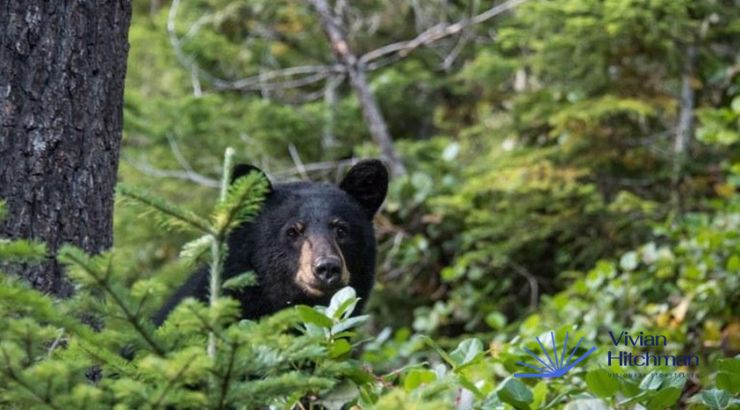Enjoying the benefits of four distinct seasons has always been seen by me as a gift from nature.
Of course, there have been encounters with frosty days in the winter or sweltering temperatures in the summer, which I would have preferred to escape from, but knowing that a change in season was not far away always offered me comforting anticipation.
The shoulder seasons of spring and fall are delightful breakthroughs from Mother Nature’s temperature pendulum swings.
We are now in a transitioning phase as spring is slowly erupting.
Regardless of the season, though, most mornings I go for a short walk to activate, stimulate, and regenerate my homeostasis for the day.
Spring is also particularly special, as it delivers so much sensory enjoyment.
In any case, I’m grateful that I’m able to live immersed in nature.
Tall evergreens surround my property, a stream flows along its perimeter, and there’s a lake not too far away, which is only a short walk along a valley trail offering several old-growth forest sections.
It’s hard not to get immersed in the majesty of it all, and along the way, I pass others similarly engulfed in nature’s beauty.
Most say hello with a smile or a nod, some hurry by, dog leash in hand, while others are oblivious to my presence, headphones on, entrenched in auditory distractions of another sort.
But despite a seemingly shared love of walking in nature, I find those who don’t engage with all senses somewhat bewildering.
There are so many sounds that go unnoticed – the birds chirping, the creek trickling, and the wind rustling through the trees.
The chirping of birds most profoundly signals the onset of spring, not least because many birds migrate south in the winter, and as a result, nature is quieter.
Those who remain here throughout the winter chirp mainly to communicate food locations or for safety.
In the spring, however, birds’ songs become longer and more frequent.
A contributing factor is the additional light hours, which instigate what is called the dawn chorus at around 4:00 a.m.
I’m not suggesting that your walks should coincide with the birds’ hours of wakefulness, but rather, to invite in the soothing sounds of nature during your morning walk.
That being said, there are a multitude of creative, informative, and groundbreaking podcasts to listen to, and I don’t deny that.
I don’t want to dissuade people from benefiting from eloquent masters, as it’s easy to become entranced by their offerings.
Perhaps a balance can be met, however, between all-consuming podcasts and the sounds that you experience when walking in nature.
Be it meandering along rooted trails amongst gnarly trees or careening through urban pathways, there are birds that nest, squirrels who race, and riverbeds winding and gurgling in the most unexpected places.
There is much to listen to! So, don’t miss out on Mother Nature’s complimentary offerings.
“But I can see what nature has to show,” I hear you say.
That may be true, but distractions can impinge on the visual, as well.
Visual and auditory go hand in hand, and it is often our hearing that alerts us to what we see or may have missed.
And when you’re so absorbed by the sounds coming from your headphones, it’s easy to miss the subtleties of nature.
The Advantages of Walking in Nature Without Your Headphones
Greater awareness of your surroundings offers a sense of peace, especially when you’re easing into the day.
For those who meditate early in the morning, a full sensory walking meditation could be a great alternative.
Disconnecting from devices and replacing them with the sounds of nature, no matter what time of day it is, encourages mindfulness and mental awareness while offering relief from the stresses of the day.
And for some, being able to hear the sounds of nature could mean the difference between life and death.
When the wind’s intensity builds from a whisper to a stronger, fuller crescendo, for instance, it will alert a hiker to a changing sky and shifting weather.
In any case, when walking in unfamiliar locations, listening to your surroundings is imperative for your safety, whether you’re crossing a busy street or trying to traverse a more challenging trail.
Listening will also alert you to wildlife before they enter your space.
Paying attention to dense bushes or underbrush swishing, snapping, or crackling, for example, could save you from being sprayed by a defensive skunk.
My own experience included meeting up with a large black bear, a regular in my hood, whom we affectionately called Billy Bob.
He would often be seen grazing on the golf course or meandering through the neighbourhood bushes.
Then, one day, during an after-dinner stroll along the trail near my house, I heard unusual sounds in the greenery only a few feet ahead.
As I slowed down, Billy Bob just sauntered out in front of me.
As advised in such a case, I slowly backed up, retracing my steps, and our furry friend stopped, looked in my direction, and then continued walking away from me.
Typically, Billy Bob is a passive creature, but black bears can be curious and unpredictable, so if I wasn’t fully attentive, I may have had an even closer encounter.
If you live in a more urban area, this may seem like quite an extreme example, and it’s unlikely this sort of thing would happen, although foxes, coyotes, skunks, raccoons, and squirrels do grace denser locations.
At any rate, it’s good to pay attention to the wildlife when you’re walking in nature, not just for personal safety, but also to enjoy everything it has to offer.
I, for one, saw my encounter with Billy Bob as just another gift from nature at its best, and one which provided me with a beautiful closing chapter to my day.


